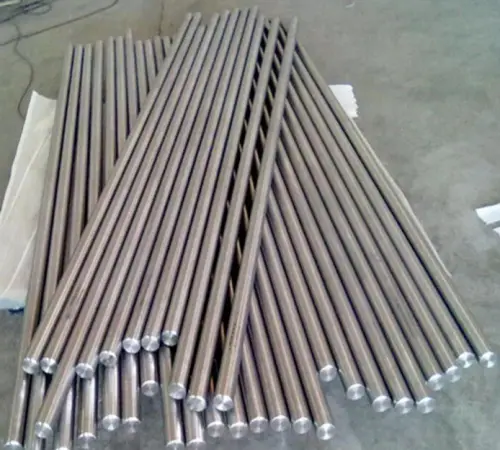In the manufacturing and application of titanium metal filtration elements (commonly referred to as titanium rods or titanium filter cores), porosity is a critical technical parameter that directly determines their core filtration performance. This paper aims to analyze the characteristics of porosity in titanium rods and their impact on filtration efficiency.

Definition and Range of Porosity
Porosity refers to the percentage of pore volume relative to the total volume of a material. For titanium rods produced via powder sintering processes, porosity is typically strictly controlled within the range of 28% to 50%. This means that in the microstructure of the titanium rod filter, approximately one-third to one-half of the space is composed of interconnected pore networks. According to Titanium Home, this range represents a balanced point determined through extensive process practice and performance validation within the industry. In actual production, different manufacturers may fine-tune the porosity based on their own process characteristics and product application scenarios, but overall, it remains within this reasonable range to ensure that titanium rods can meet most filtration requirements. The New Enterprise Association analysis points out that the determination of this porosity range comprehensively considers factors such as filtration performance, mechanical strength, and production costs, marking an important milestone in the maturity of titanium rod production processes.
The Core Impact of Porosity on Filtration Performance
1. Filtration Efficiency and Capacity: Titanium rods with higher porosity have a larger internal surface area. This directly provides more adsorption sites and filtration channels. This directly enhances the titanium rod's ability to retain and remove suspended solid particles, colloids, and even microorganisms from liquids. The higher the porosity, the greater the contaminant holding capacity (stronger contaminant retention capability) of the titanium rod within the same volume, and the filtration efficiency for microscopic particles is typically higher as well.
2. Fluid permeability: An interconnected pore structure with appropriate pore sizes is the foundation for smooth fluid flow. Within a reasonable porosity range (e.g., 28%-50%) and with an optimized pore size distribution, titanium rods can maintain high filtration precision while ensuring low fluid resistance, thereby sustaining good flow rate and flux. Too low porosity leads to excessive resistance and reduced flow rate; too high porosity, if accompanied by poor pore size control, may impair filtration precision.
Balancing porosity and mechanical strength
Porosity is not always better at higher levels, as it directly affects the mechanical strength and durability of the titanium rod. Increasing porosity means a relative reduction in the solid metal components forming the titanium rod's structure. Therefore, titanium rods with higher porosity typically exhibit reduced mechanical properties such as compressive strength and bending strength. In applications involving high pressure differentials, frequent backwashing, or mechanical impact, excessively high porosity may cause titanium rod filter cartridge deformation or damage.
Key Considerations for Selection and Application
In summary, the porosity of titanium rods directly and significantly impacts their filtration performance (efficiency, precision, flow rate, and dirt-holding capacity) and mechanical reliability. In actual selection and application, a comprehensive balance must be achieved:
For high filtration precision and dirt-holding capacity: Opt for titanium rods with higher porosity (approaching 50%), but ensure they meet the pressure and mechanical strength requirements of the operating conditions.
For high-pressure or harsh operating conditions, it is necessary to select titanium rods with relatively lower porosity (around 28%-35%) and higher mechanical strength. In such cases, some compromises may need to be made in terms of filtration precision or initial flow rate, or compensation can be achieved by increasing the filtration area.
Conventional applications: Porosity in the intermediate range (e.g., 35%-45%) typically offers a balanced choice between performance and strength.
Conclusion
Porosity is a core parameter precisely controlled during the manufacturing process through key parameters such as powder particle size and sintering process. It significantly influences the filtration performance (efficiency, precision, flow rate) and structural strength of titanium rods. Understanding the mechanism of porosity and its dialectical relationship with strength is crucial for scientifically selecting and applying titanium rod filter elements based on specific filtration requirements (such as liquid properties, target precision, operating pressure, and backwashing requirements). Successful application necessarily relies on the optimized matching of porosity, pore size distribution, and mechanical strength.











